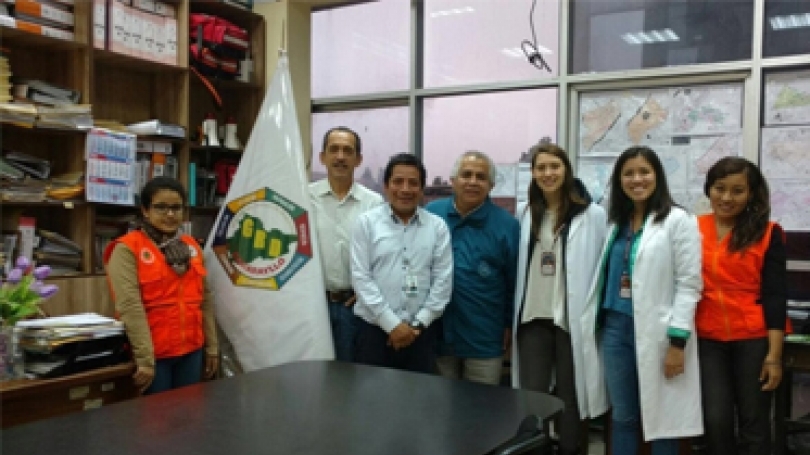
- Undergraduate
- Foreign Study
- Fellowships
- News & Events
- People
Back to Top Nav
Back to Top Nav
Back to Top Nav
During the summer of 2016, Jade McLaughlin ’17 and Madellena Thornton ’17 worked as Global Health Initiative interns at Hospital Cayetano Heredia (HCH) in Lima, Peru. Their work on emergency preparedness focused on the willingness of healthcare workers to respond in a disaster.
by Madellena Thornton ‘17
The eight districts in Northern Lima stricken by poverty are incredibly vulnerable to devastation from a natural or biological disaster due to the lack of first-response services, potentially collapsible and densely clustered housing, and enormous education and income disparities. Hospital Cayetano Heredia (HCH), a general level III-1 hospital, constitutes one of three hospitals in the Ministry of Health in Northern Lima. Among the three hospitals, there are fewer than 900 beds. With a population of 2.75 million people, these hospitals together have insufficient capacity for healthcare, overwhelmed emergency services, and large gaps in disaster risk management for the population that they serve.
In the case of a disaster, like an earthquake or epidemic, the hospital response involves, among many things, enabling of expansion areas, massive mobilization of resources, attention to patients in acute and chronic conditions, and, above all, the use of emergency health personnel. In the case of a disaster, it is important to understand the availability of human resources and who the hospital can count on as well as an appreciation of facilitating factors and obstacles affecting the staff’s willingness to work.
Read the full story here.